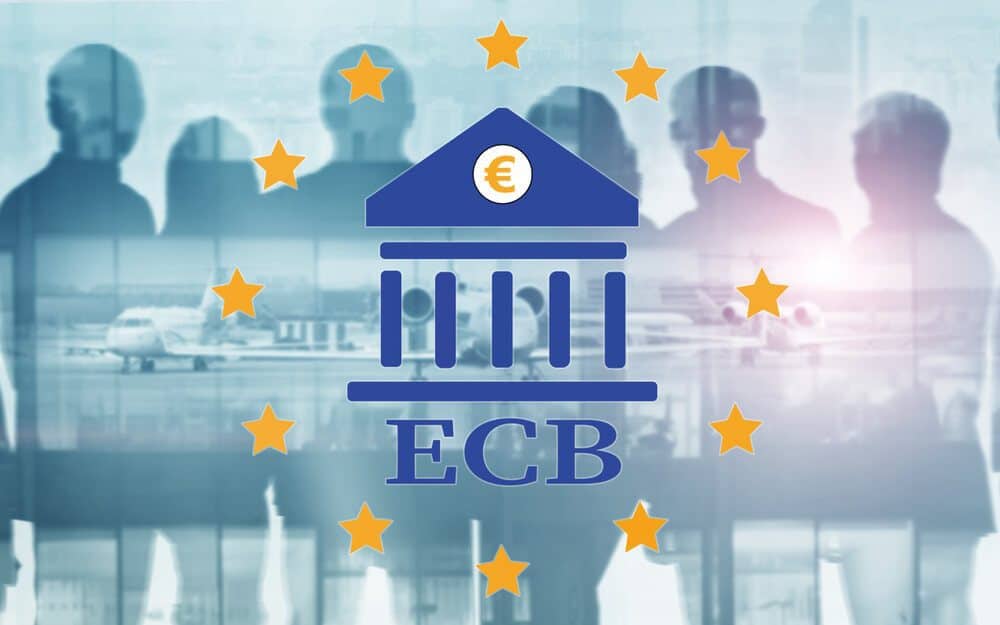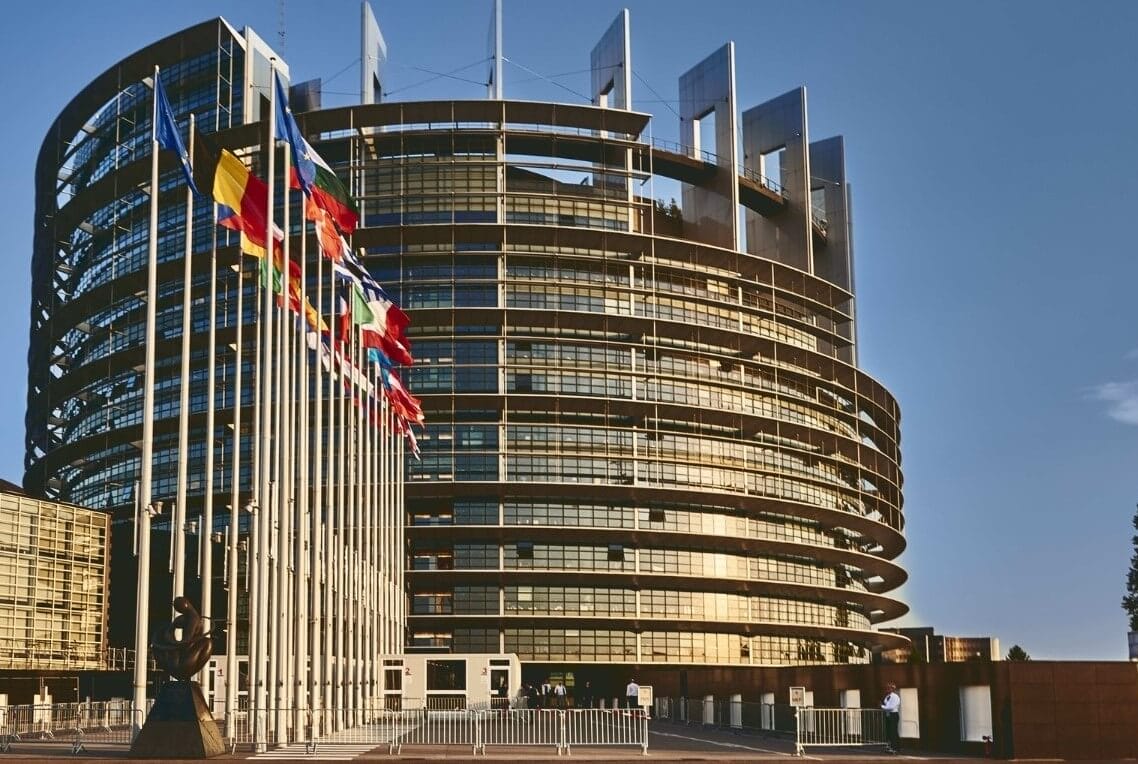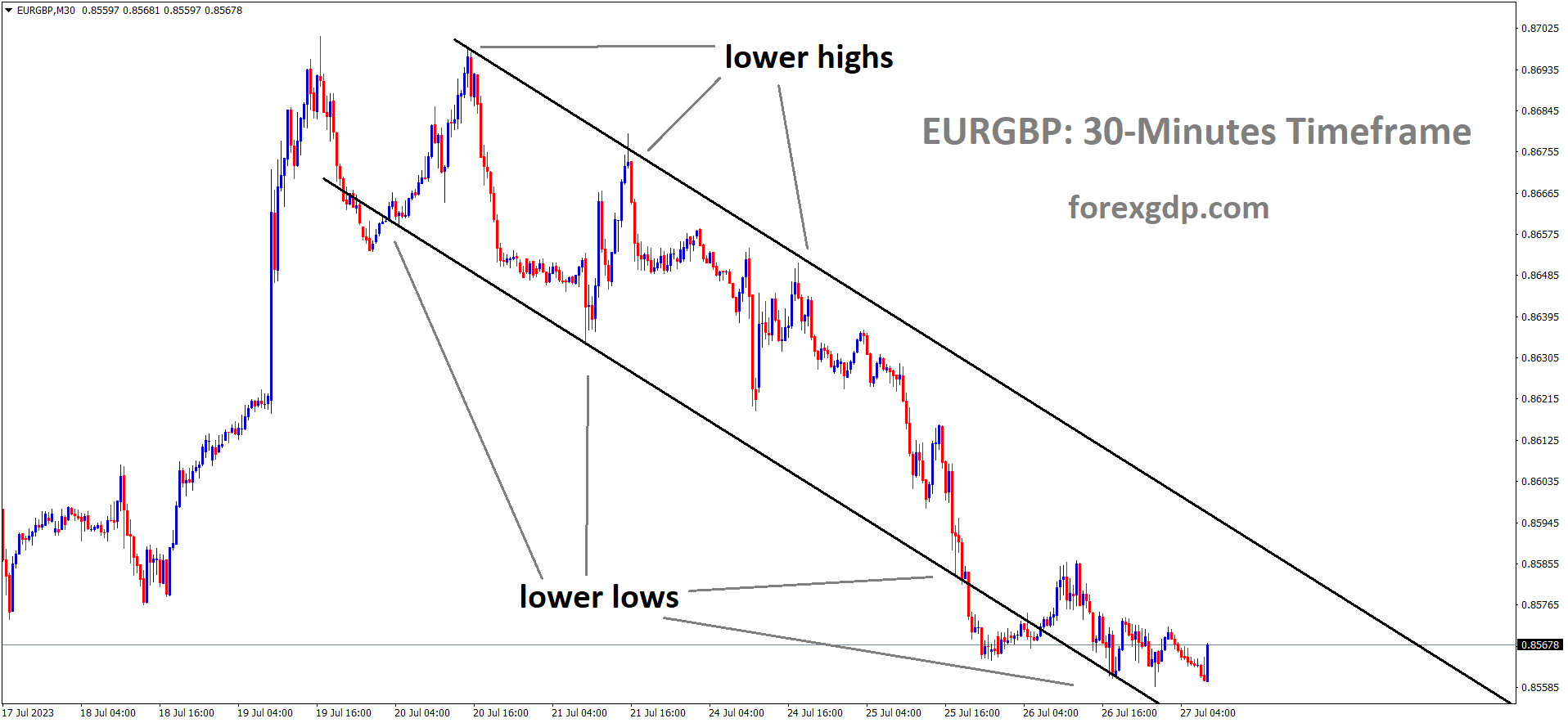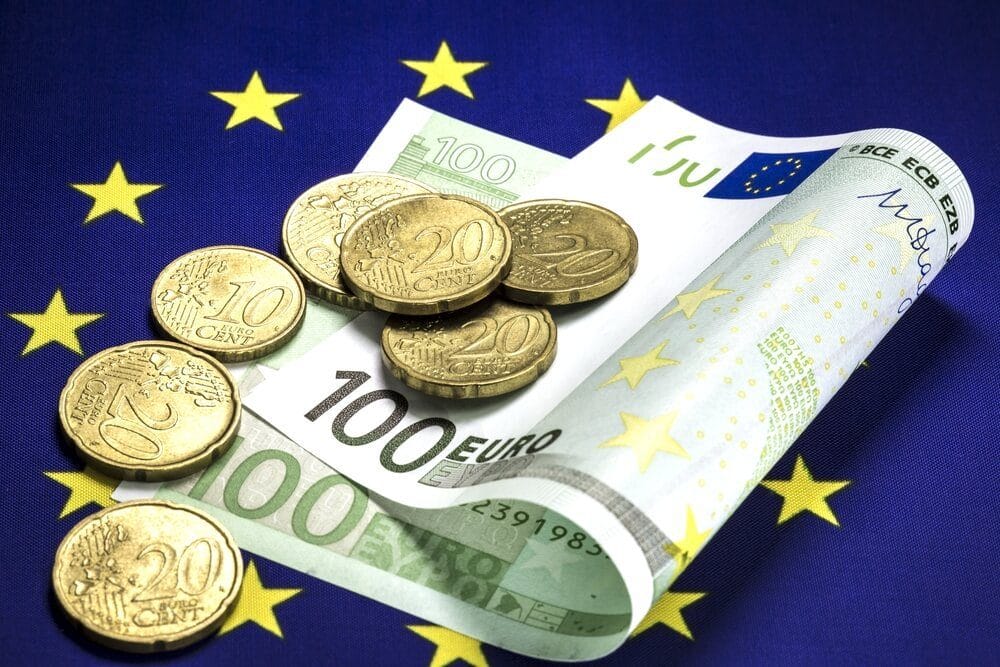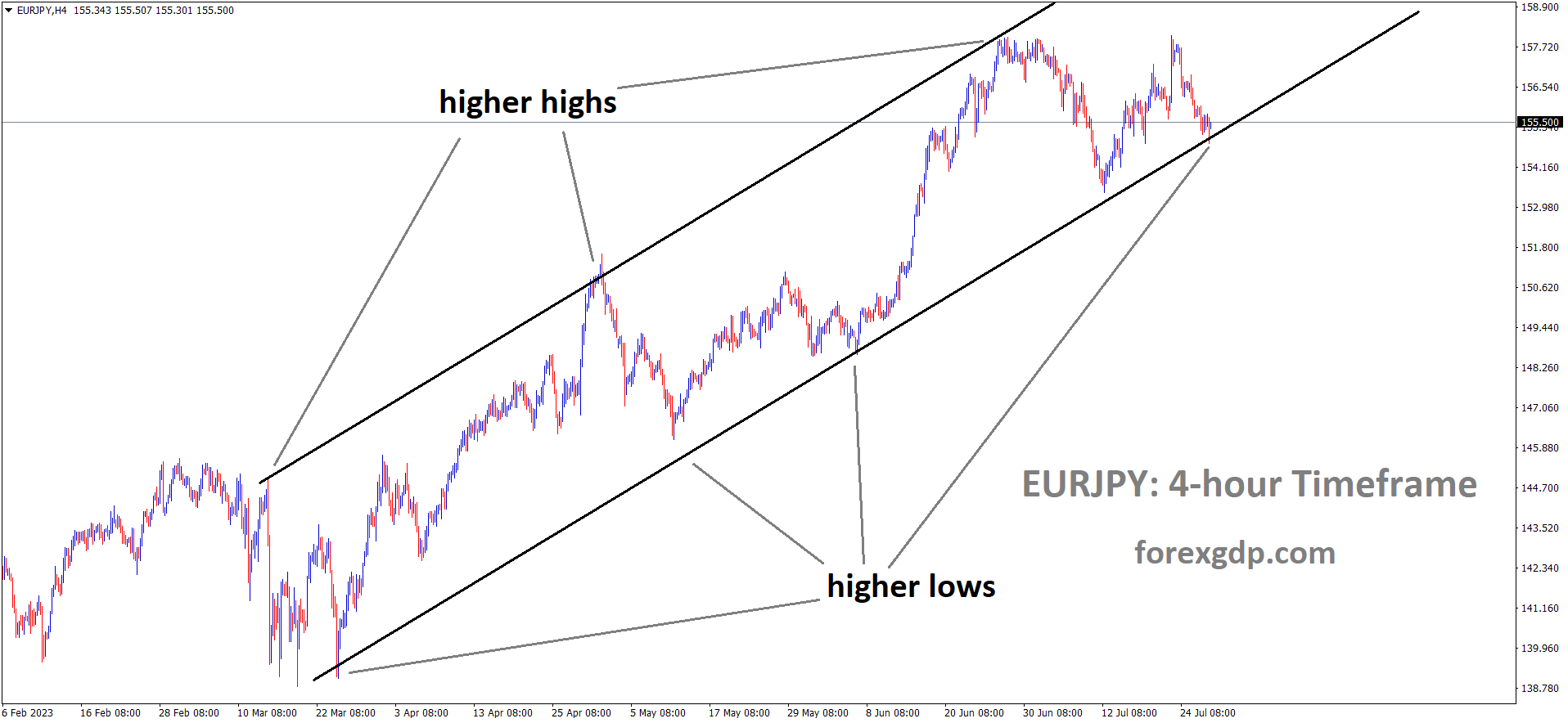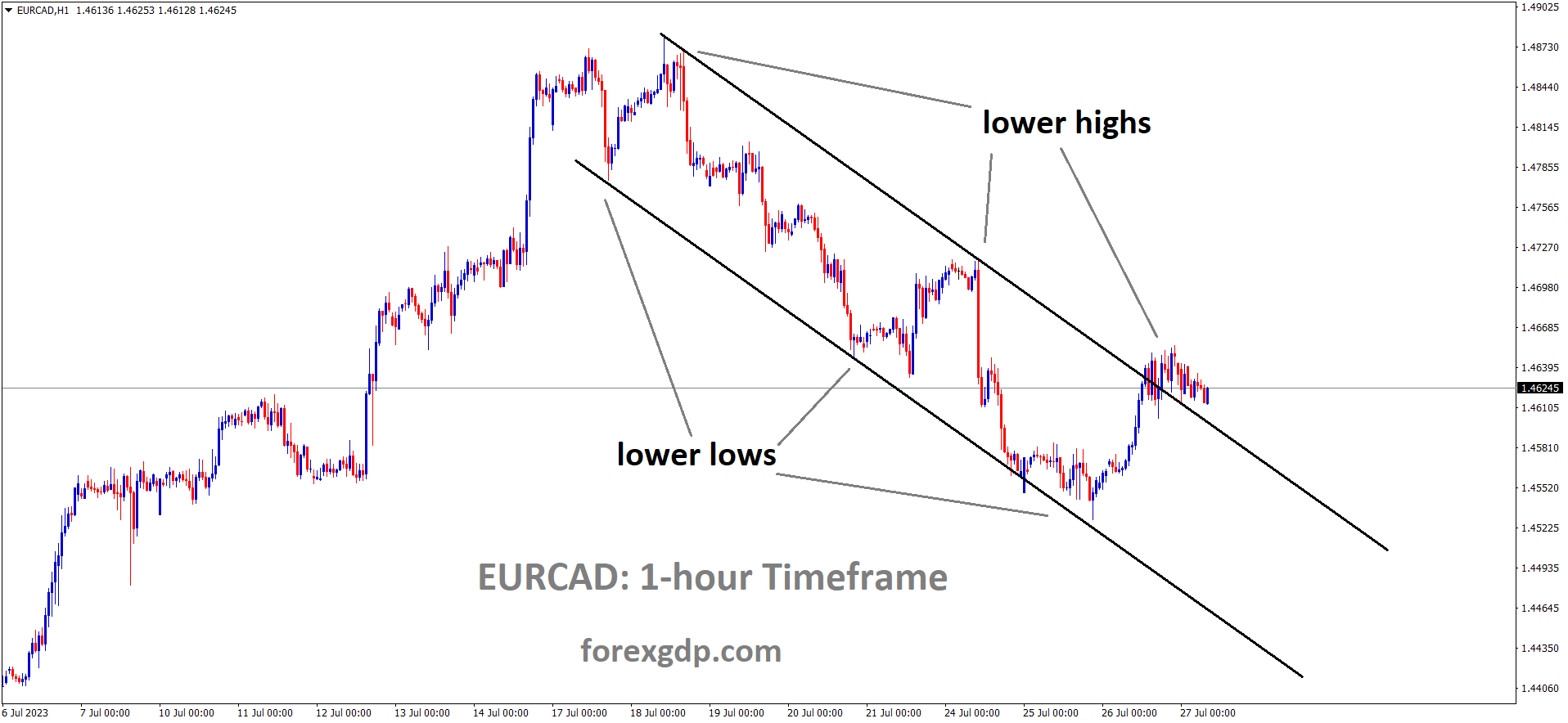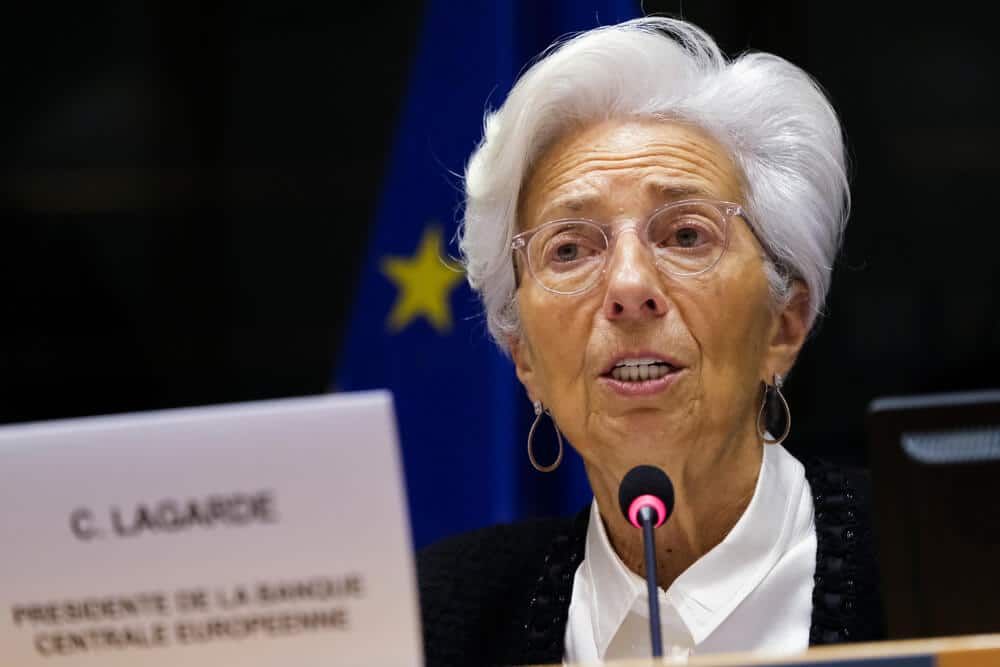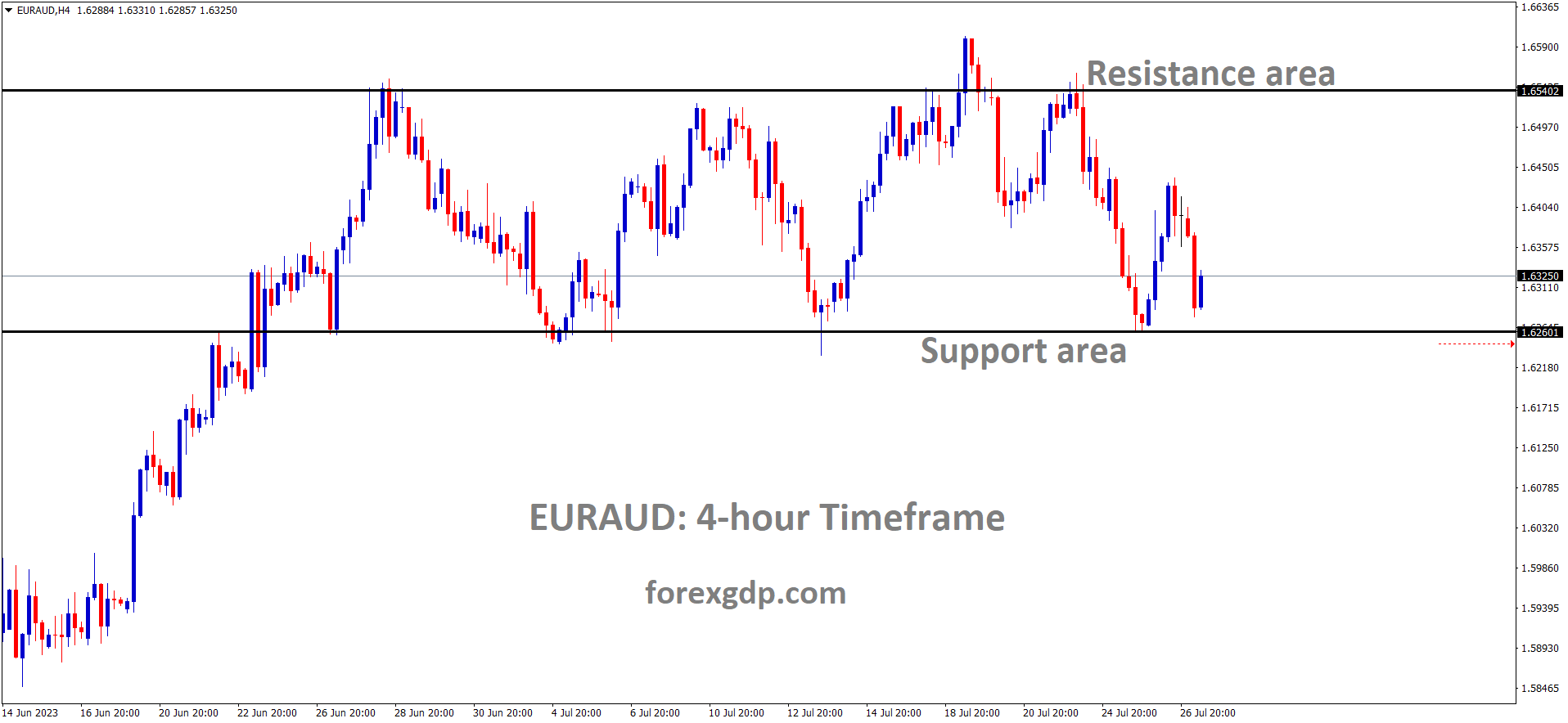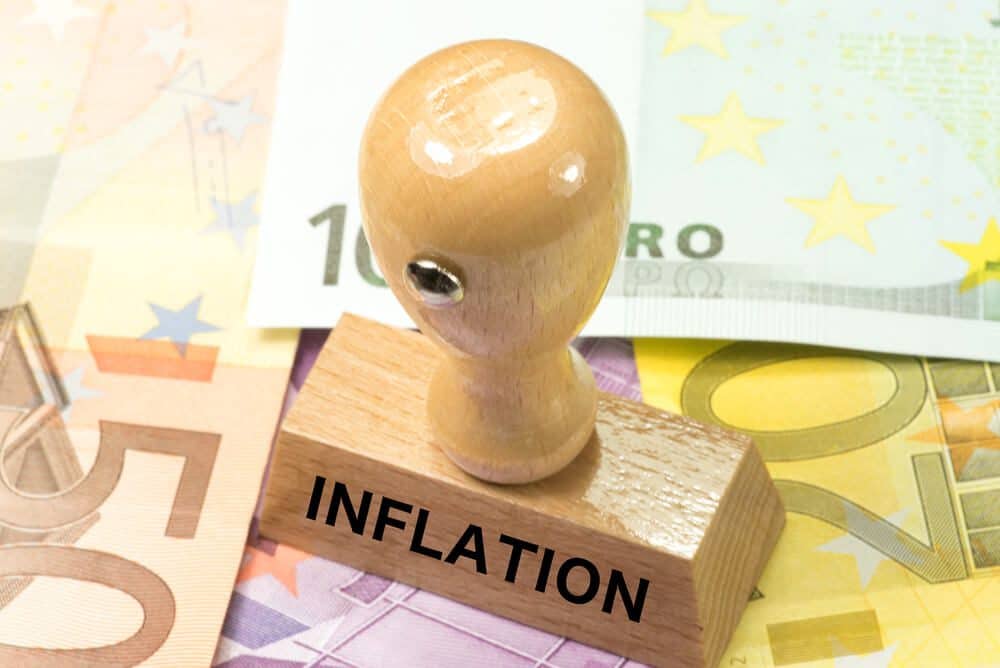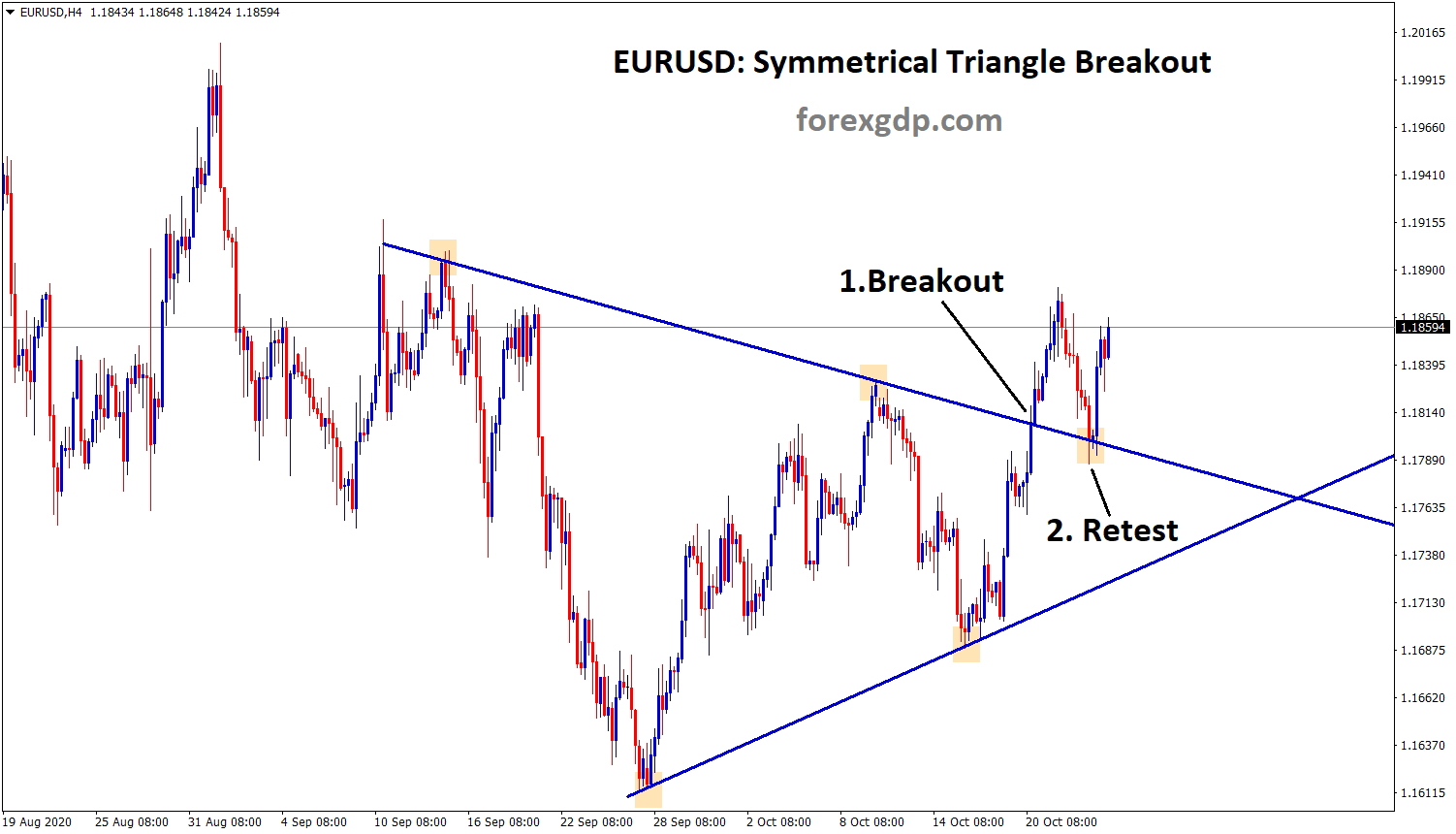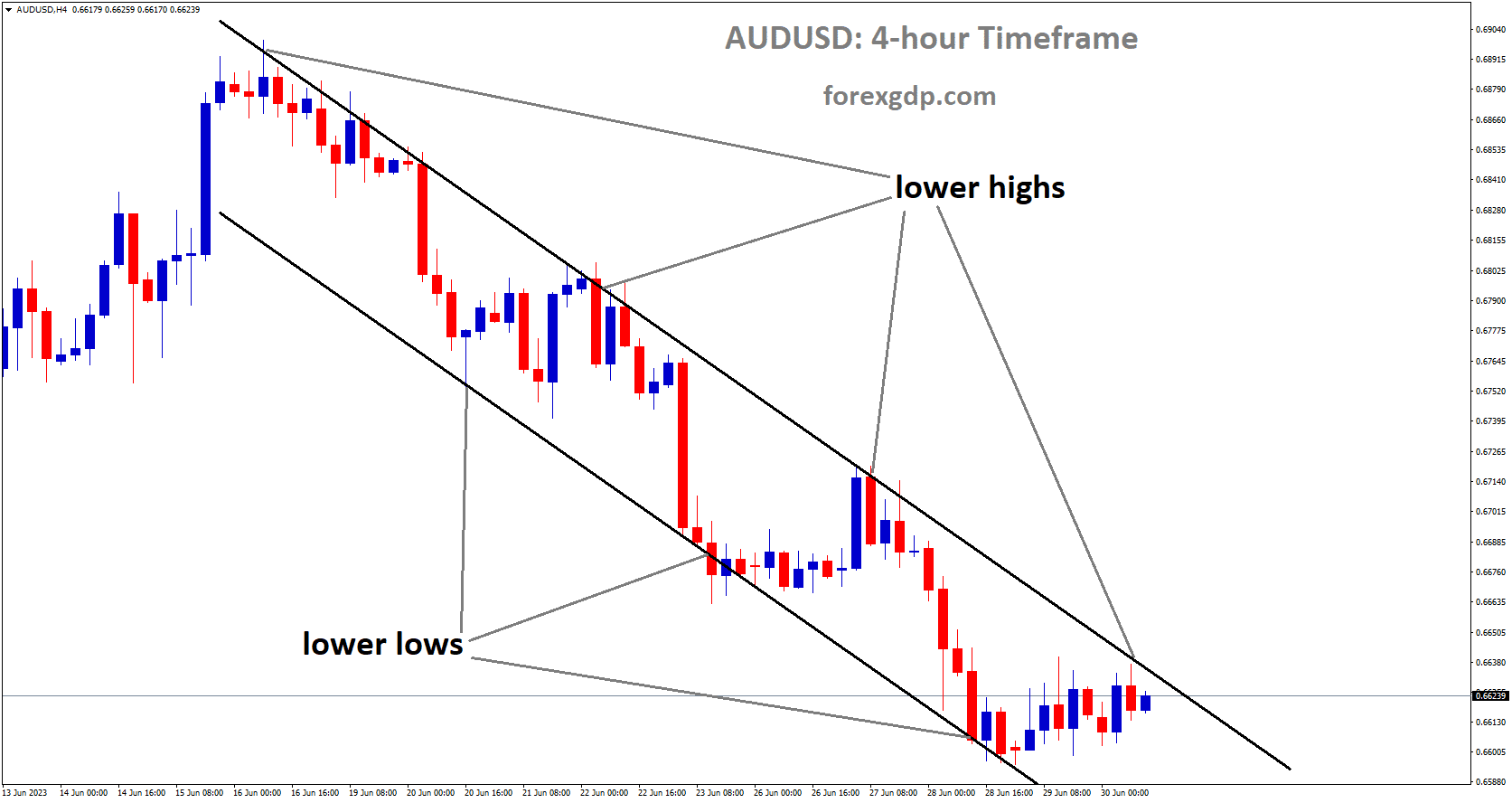The ECB is anticipated to raise interest rates by 25 basis points this week in response to the higher Consumer Price Index (CPI) readings. With Germany already experiencing a recession, there are concerns that the Eurozone might also slip into a recession if further tightening measures are implemented in the upcoming meeting. 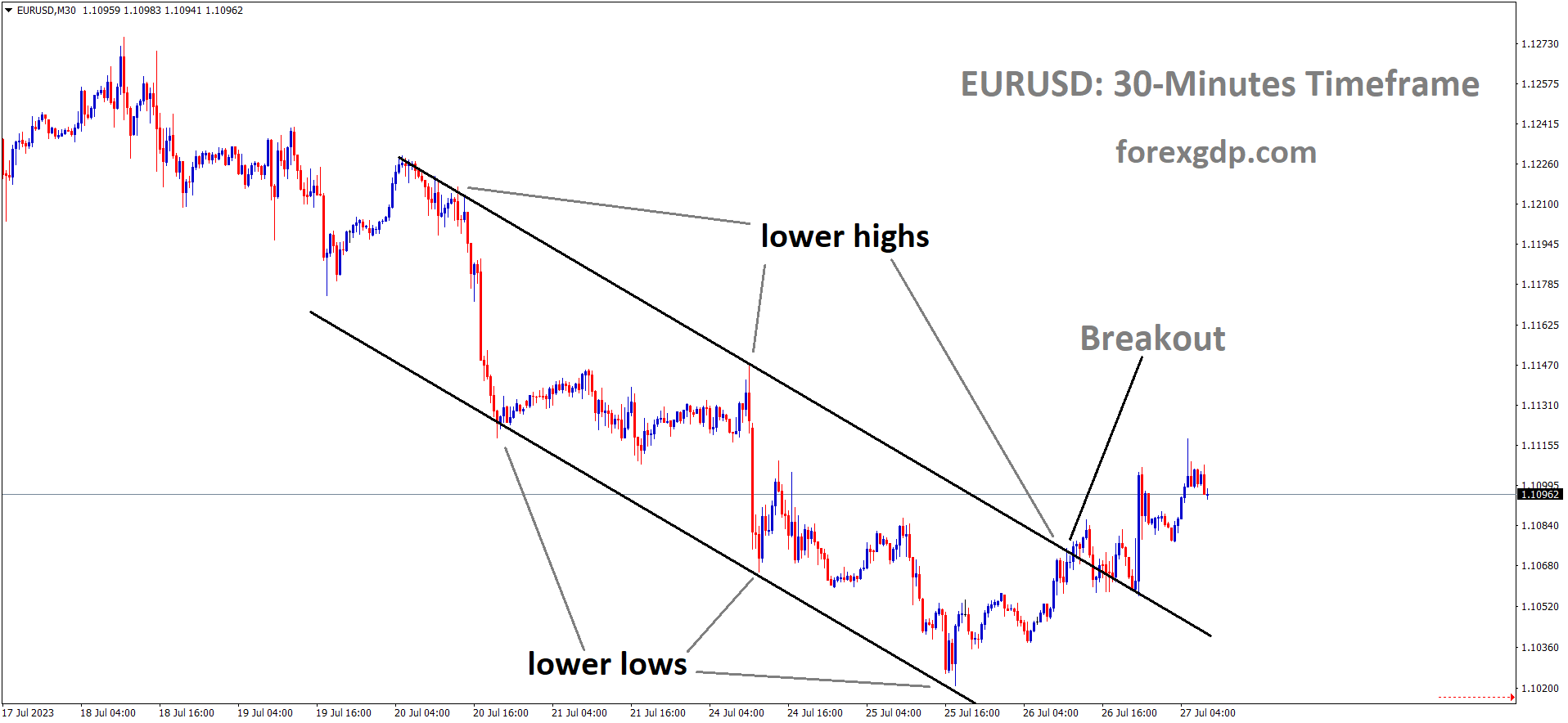 EURUSD Market has broken the Descending channel in upside
EURUSD Market has broken the Descending channel in upside
The European Central Bank (ECB) is facing a crucial decision regarding its monetary policy, with expectations of an imminent interest rate hike from 3.5% to 3.75% at its upcoming meeting on 27th July. Furthermore, there is speculation that the ECB might consider another rate hike in September, pushing the rate to 4.00%.
This article explores the potential challenges and uncertainties the ECB faces in maintaining its commitment to inflation control.
The ECB’s Hawkish Stance and Market Sentiment
EURGBP is moving in the Descending channel and the market has reached the lower low area of the channel
The ECB’s intent to signal its commitment to tackling inflation has led to widespread expectations of a rate hike at the July meeting. Analysts from Deutsche Bank suggest that a further rate increase in September cannot be ruled out, emphasizing the ECB’s willingness to go ‘higher and longer’ if necessary. However, the ECB also aims to avoid portraying September as a turning point in the monetary policy cycle to ensure clarity in its commitment to achieving its inflation targets.
Bond Yields and Interest Rate Expectations
Long-dated euro zone government bond yields have shown mixed movements, reflecting the balancing act investors are performing. Dovish remarks from European policymakers and signs of cooling inflation have led to a drop in borrowing costs in the euro bloc.
EURJPY is moving in an Ascending channel and the market has reached the higher low area of the channel – Copy (2)
On the other hand, strong U.S. job data and unexpected declines in unemployment benefit claims have fueled speculations of continued interest rate hikes by the Federal Reserve, impacting market expectations. Germany’s 10-year government bond yield, the benchmark for the eurozone, has experienced fluctuations, reaching its highest level since March 9th before ending the week slightly lower.
Expert Predictions and Challenges Ahead
Economists unanimously anticipate a 25-basis-point interest rate increase by the ECB at the July meeting, with a majority also expecting another hike in September.
EURCAD is moving in the Descending channel and the market has reached the lower high area of the channel
However, the European Central Bank’s plan to maintain interest rates at their peak for an extended period is met with skepticism among economists. They struggle to predict when inflation will return to the 2% target amid stubborn price pressures and a struggling euro-zone economy. Uncertainty about subsequent rate moves leads to varying projections for end-2024 borrowing costs.
ECB’s Communication Strategy and Credibility
The ECB faces the challenge of conveying a clear rationale for pausing the rate hikes while leaving a credible tightening bias. ECB President Christine Lagarde is expected to provide data-driven guidance without explicitly mentioning more tightening, or stressing conditionality and uncertainty in future policy comments. The communication surrounding the ECB’s policy decisions will offer insights into how close the end of the hiking cycle is, providing crucial information for investors.
Market Expectations and Confidence in ECB’s Policy
EURAUD is moving in the Box pattern and the market has rebounded from the support area of the pattern
Despite the challenges, survey respondents express confidence in the ECB’s ability to strike the right balance between inflation control and economic stability. Most respondents believe the ECB will neither push too far nor raise rates prematurely. The upcoming meeting is likely to see another 25-basis-point rate hike, but the question remains whether the ECB will pre-commit to a hike at the following meeting in October. ECB officials may choose to keep their options open, depending on the economic data between September and October.
Inflationary Pressure and EURUSD Dynamics
Inflation in Europe remains elevated compared to the US, leading to a hawkish stance from the ECB. The narrowing of interest rate differentials between the euro and the dollar has supported the euro’s strength against the greenback, leading to a 17-month high for the EURUSD exchange rate.
Conclusion
As the European Central Bank approaches its July meeting, the expectations of a 25-basis-point interest rate hike are widely accepted by the market. The ECB’s hawkish stance on inflation control and the potential for another rate increase in September have driven bond yields and impacted market sentiment. However, uncertainties surround future rate moves, making it challenging for the ECB to maintain a credible tightening bias while keeping its options open. The communication strategy of ECB President Christine Lagarde will play a crucial role in providing clarity to investors. Despite challenges, economists and market participants express confidence in the ECB’s ability to navigate its monetary policy to tame inflation without endangering economic growth. The ongoing dynamics of inflation and currency movements, particularly the EUR/USD exchange rate, will continue to shape the ECB’s policy decisions in the coming months.
Don’t trade all the time, trade forex only at the confirmed trade setups.
Get Live Free Signals now: forexgdp.com/forex-signals/

